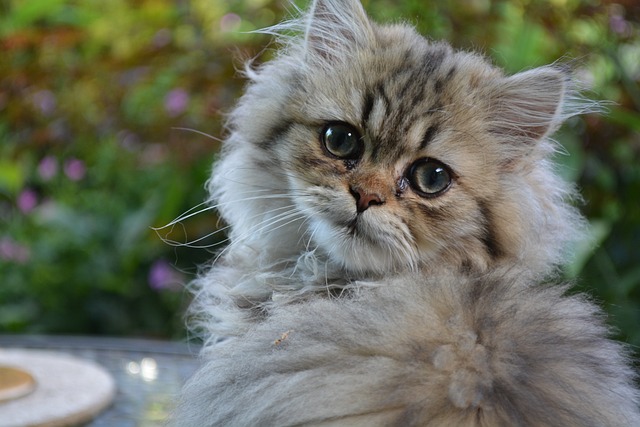When you have kids, it’s easy to tell if they’re happy. Are they smiling? If so, they are happy. If not, it certainly means that they need something like attention, food, cuddling … Likewise for dogs, which have relatively easy emotions to interpret. Do they wag their tails? If so, they are happy! Cats must therefore have their own way of telling us when they are happy: by the purring of the cat?
Not so fast … It turns out that cats are complicated animals, full of mysteries. A purring cat may express satisfaction, but this isn’t always the case. So why do cats purr, if it’s not always fun?
Cat purr, what does it really mean?
Before answering this question, let’s see how they purr first. Although this does not appear to be a controversial issue, little is known about the purring mechanism.
It turns out that cats don’t have a purring organ or anything like that. The purring would therefore be the result of a rapid contraction of the muscles of the larynx and diaphragm, which would make the vocal cords vibrate, hence the noise.
Some feral cats are also known to purr. Red cats, cheetahs, Eurasian lynx, and pumas can all evoke this particular buzz, but big cats like lion, panther, jaguar, and tiger cannot entirely.
Purring begins very early in the kitten’s life, just a few days after birth. Scientists suspect that the noise is initially a calming signal from the cat to her kitten, a sign of good health that helps bond.
But why then do they purr for the rest of their lives? It’s a whole different story.
Cats have many reasons to purr
Curled up on your knees or rubbing your leg begging for petting, your cat’s sweet purrs are one of the reasons we love them so much. It feels good to have an outward sign that shows you are making someone happy.
This is not the only reason a cat purrs, however.
1. This is their way of saying “I love you”
While cats are known to be aloof, behind this detached facade hides a little furry love ball. And guess what? They want you to know how much they love you. Purring is a way for them to communicate their appreciation for everything you do towards them.
2. Fear, stress, and anxiety
When you are nervous, for example, you may laugh inappropriately, like when someone trips in front of you? It would appear that cats sometimes use their purring power in very similar ways, as they know no other alternative way to express what bothers them.
The purring also helps calm them down, as a kind of self-soothing. If you notice that your cat purrs a lot and there doesn’t seem to be a reason, then ask yourself if there are any stressors in their surroundings that might be bothering them.
3. Hunger
Cats have a million weird ways to remind you that it’s dinner time, and one of those ways is to purr. The “I’m hungry” purr is often more plaintive and a little louder than its “I’m happy” counterpart. So the next time you see your cat purring in the kitchen, know that he might be talking to you … about food, of course!
4. To persuade
When a cat wants something, to play or to attract attention, it has a specific way of combining a loud purr with a meow. It turns out that this specific sound strangely resembles that of a child, and that we would therefore automatically be more sensitive and connected to it… Cats are very clever little creatures, really very clever!
What are the benefits of purring, or rather, “purring therapy”?
As if being incredibly cute weren’t enough for them, they also needed to have healing skills … Studies suggest that purring help them to heal themselves.
The vibrational frequency of a cat’s purr mimics treating bone fractures, joint problems, injuries, swelling or edema, and muscle tension. When a cat purrs, then, it may be healing itself. This would also explain the myth according to which a cat has nine lives …
Even more incredible is that the restorative properties of purring don’t just benefit your feline. It seems that they can also have benefits for human health! Healing sound vibrations are in the same frequency that the cat purrs, between 25 and 50 Hertz.
Finally, this therapeutic frequency is a means of creating bonds, whether it is between the mother and her kittens, or between the owner and her animal. Don’t you love it when your favorite feline starts purring at you?
The moral of the cat purr story: Never miss an opportunity to snuggle up with your cat, cuddle it, and immerse yourself in the beautiful music of its soft purr.







